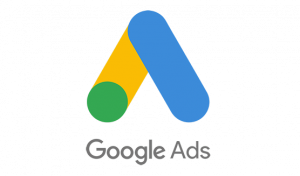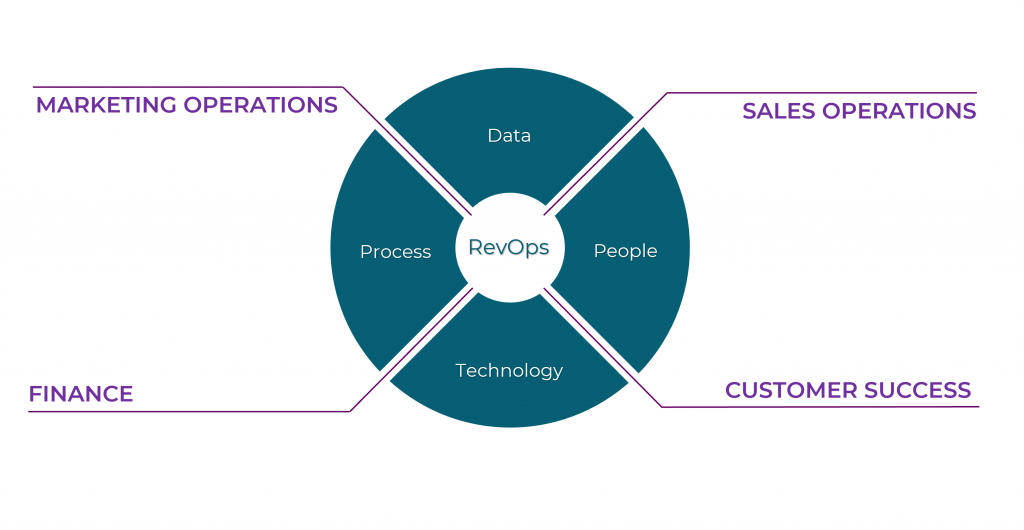Planning B2B marketing activity is often achieved using a suite of different tools, platforms, and applications.
We asked some industry experts what their go-to tools were when planning B2B marketing strategies, campaigns, and tactics. They highlighted the common challenges of integration between multiple platforms and exposed a lack of a dominant tool that brings all the information together in the same place.
For more detailed insights into the use (and limitations) of B2B Marketing Planning tools, read our survey and associated CMSWire blog here.
Combination of Tools at Manifest
At Manifest, we use a combination of tools to plan and execute our go-to-market strategies. HubSpot is central to our approach, helping us track outreach, engagement, and pipeline activity while keeping everything aligned with our broader strategy. LinkedIn Sales Navigator is invaluable for identifying and reaching key decision-makers, and Google Analytics ensures we measure the impact of our content and campaigns effectively.
For project management, we rely on Asana, which helps keep our team on track with campaign timelines, deliverables, and performance metrics. While these tools are powerful, one capability we wish they had was a more seamless way to track long-term relationship-building efforts—especially for B2B sales, where deals often take months to develop.
A tool that could better visualize multi-touch engagement across channels in a single, intuitive dashboard would be a game-changer.
Choosing the Right Tools Feels Like a Maze
In the world of B2B marketing, choosing the right tools to plan your go-to-market strategies can feel like navigating a maze. Some platforms are HubSpot, Marketo, or Salesforce. These tools help marketers organize their campaigns and track their results. While we know they play a crucial role in planning, the specifics of how they impact day-to-day operations might not be so clear-cut.
Think of these platforms as your digital toolkit. Just as a chef relies on knives and pans to whip up a meal, marketers depend on software to craft their strategies. For instance, when a company launches a new product, they can use these tools to define their target audience, set goals, and map out their marketing activities. If this planning is done well, the result is a cohesive campaign that resonates with potential customers, driving engagement and sales. However, if the tools fall short in tracking real-time results, it can lead to missed opportunities.
For the average person, these marketing strategies might seem distant, but they directly impact what you see online. When a company efficiently uses its tools, it can offer you tailored ads and relevant content. Conversely, if the tools fail, you might encounter irrelevant ads or missed opportunities for valuable information. This ripple effect shows that effective marketing isn’t just about selling; it’s about connecting with people in meaningful ways.
Ultimately, the effectiveness of these platforms can shape the future of marketing. As companies adapt to new tools and technologies, we can expect smarter, more engaging campaigns. For you, this means a more personalized experience, where advertisements and content are more aligned with your interests. If marketing tools evolve to meet user needs, everyone stands to benefit.
Justin Abrams, Founder & CEO, Aryo Consulting Group
Right Tools Make All the Difference
When it comes to planning go-to-market strategies, campaigns, and tactics, the right tools can make all the difference. In my experience leading a property buying firm, we rely on a mix of platforms to streamline our efforts, track results, and adapt quickly. Let me share some insights into the tools we use, what they do well, and where they could improve.
For overall strategy and campaign planning, platforms like HubSpot and Trello are incredibly useful. HubSpot combines CRM, email marketing, and analytics in one place, which helps us manage everything from lead generation to nurturing campaigns. Trello is great for visualizing workflows and keeping the team aligned on tasks. As Saddat says, “A good tool doesn’t just organize your work-it helps you see the bigger picture.”
For tracking goals and measuring performance, Google Analytics is a staple for monitoring website traffic and conversions. For social media campaigns, tools like Planable allow us to schedule posts, collaborate on content, and get quick approvals. These platforms save time and reduce back-and-forth communication.
However, no tool is perfect. One challenge I’ve noticed is integration. Many platforms don’t seamlessly connect with others, which can lead to data silos. For example, while HubSpot provides strong analytics for email campaigns, integrating it with other tools like Google Ads or LinkedIn can require extra effort. Another gap is in personalization-automation tools sometimes fall short in creating truly tailored experiences for B2B audiences.
If you’re looking for budget-friendly options, there are plenty of free or low-cost tools that still pack a punch. Google Analytics is free and offers robust tracking capabilities. Trello’s basic plan works well for small teams. Canva is another great option for creating professional visuals without hiring a designer.
The biggest takeaway? Tools are only as good as the strategy behind them. They help you execute efficiently but won’t replace clear goals or creative thinking. The key is finding a stack that aligns with your team’s needs while staying adaptable as your business grows.
Saddat Abid, CEO, Property Saviour
Comprehensive Suite of Tools at Twin City
At Twin City Marketing, we rely on a comprehensive suite of tools like Moz Pro and SEMrush for planning our go-to-market strategies. These platforms are invaluable for their capability to provide in-depth competitor backlink analysis, which has led to breakthroughs in our SEO strategies. For instance, by identifying common links found across top competitors, we secured partnerships that boosted our client’s organic traffic by 30% over six months.
To track goals and activities, we use Trello for project management, alongside Google Analytics for real-time insights into campaign performance. This blend allows us to create bespoke SEO and blogging strategies, resulting in lifted client profiles. However, a feature I wish these tools had is improved AI integration for predicting market shifts and their potential impacts on long-term strategies. Such insights would provide a deeper understanding, making our response to market changes much more agile.
Additionally, AI-based tools like content generation platforms have been instrumental in our workflow, cutting content creation time by half. This efficiency helps us maintain quality engagement metrics. But the potential for AI tools to improve, particularly in intuitive scheduling, could further optimize our productivity, especially in high-stakes marketing environments. In my experience, tools like SEMrush and Moz have been instrumental in planning and executing go-to-market strategies by providing detailed insights into SEO and digital PR campaigns. These platforms offer comprehensive data on competitor analysis and keyword opportunities, pivotal for shaping campaigns that resonate with B2B audiences. For example, during a campaign for a client, the use of SEMrush helped us quickly adapt to algorithm changes by identifying high-value backlinks, resulting in a 30% traffic increase over six months.
Additionally, leveraging AI-driven tools for content generation has significantly improved our efficiency. We’ve integrated platforms that automate preliminary drafts, allowing my team to focus on refining content and strategy. This approach has halved our content creation time while maintaining quality, directly enhancing campaign effectiveness and engagement. However, improved integration capabilities between these tools and CRM systems would offer even more streamlined workflows and data insights.
Popular Planning Tools and Applications








Extensive Use of Adobe and Google Analytics
In my role as a marketing consultant specializing in technology products, I’ve worked extensively with tools like Adobe Analytics and Google Analytics to plan go-to-market strategies and track campaign performance. These platforms provide a wealth of data that helps me understand customer behavior and optimize marketing tactics.
One example is our work with SOM Aesthetics, where we used comprehensive competitive analysis and target audience research to drive brand change. These insights, combined with real-time analytics, allowed us to craft campaigns that effectively resonated with their discerning clientele and achieved measurable results.
While these tools are invaluable, I often wish for more precise predictive analytics capabilities to anticipate market shifts and consumer behavior changes. Looking beyond metrics, fostering creativity and strategic foresight is essential but not always fully supported by available tech.
Tony Crisp, CEO & Co-Founder, CRISPx
Combination of HubSpot, ClickUp, and SEMrush
For B2B go-to-market strategies, I rely on a combination of HubSpot, ClickUp, and SEMrush. HubSpot helps streamline campaign execution, track leads, and measure engagement, making it essential for nurturing prospects. ClickUp keeps everything organized, from content calendars to task management, ensuring alignment across teams. SEMrush is key for competitive research, keyword analysis, and SEO tracking, helping us position our clients effectively in the market.
One thing I wish these tools did better is integrating AI-driven predictive analytics for market shifts. While they provide great reporting, more real-time insights on emerging trends would help adjust strategies faster. Despite that, this stack has helped us refine targeting, optimize campaigns, and track ROI with clarity. It ensures that every marketing move is intentional, data-driven, and scalable, leading to stronger results for both our agency and clients.
Georgi Petrov, CMO, Entrepreneur, and Content Creator, AIG MARKETER
Using Google Ads and A/B Testing Tools
In my experience at Linear Design, we’ve found considerable success using Google Ads and A/B testing tools to improve our B2B go-to-market strategies. Our focus is on driving profitability and transparency, and tools like Google Analytics help us track real-time results and adjust our strategies accordingly. A/B testing enables us to refine landing page designs, which has significantly increased conversion rates.
A particular case involved crafting Facebook ad campaigns custom to different stages of the marketing funnel-awareness, interest, and intent. By segmenting our audience and utilizing Facebook’s diverse campaign objectives, we saw a 40% uplift in lead generation. Our predictive growth model is highly reliant on these custom reports, driving custom strategies that resonate with diverse B2B audiences.
While our tools are robust, there’s room for improvement in integrating more adaptive algorithms for campaign optimization. We wish for more granular targeting options that could seamlessly align with our tailor-made client strategies, ensuring that resources are maximized for increased ROI and brand presence in an changing digital landscape.
Luke Heinecke, CEO, Linear
B2B Marketers Rely on Various Tools
B2B marketers rely on various tools to plan, execute, and optimize their strategies, including CRM systems, marketing automation platforms, project management tools, and analytics software. CRM systems like Salesforce or HubSpot are vital for managing client interactions, tracking sales pipelines, and personalizing campaigns by maintaining historical data. For example, a marketing team may use a CRM to categorize prospects based on past engagement.
Mohammed Kamal, Business Development Manager, Olavivo
If you would like to discuss the options for B2B marketing planning, reach out to the individual contributors in this article of contact-us.




